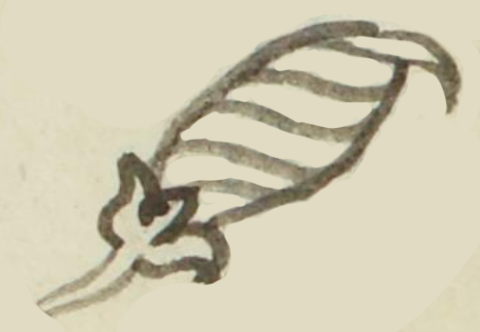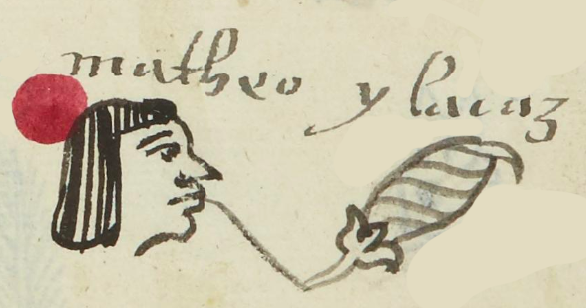Ilacatz (MH832r)
This black-line drawing of the simplex glyph for the personal name Ilacatz (perhaps "Twisted" or "Bent") is attested here as a man's name. The adjective ilacatztic ("twisted") is appropriate for the chile pepper that appears in this glyph. But the gloss does not include any part of the word for chilli. However, there is another adjective for twisted, and this is quechilacatztic. It has "-chil-" in the middle, which seems like a possible explanation for the use of the chile pepper to demonstrate something twisted.
Stephanie Wood
Chile peppers were sometimes metaphors for penises, given the name Tepolchil, which appears on MH852r. See also Chilcotoc (MH626r), below. According to Gustavo Corral (in his article, "A Chile is Never Just a Chile" (2015) published in Empire and Colonialism, Food and Sexuality, Latin American Sexualities, https://notchesblog.com/2015/09/24/sex-and-food-in-mexico/) "The linkage of the chile with eroticism and the penis can be found in the writings of the early Spanish chroniclers."
Stephanie Wood
matheo ylacaz
Mateo Ilacatz
Stephanie Wood
1560
Jeff Haskett-Wood
nombres de hombres, chiles, torcido, rayado

ilacatztic, something bent or twisted, https://nahuatl.wired-humanities.org/content/ilacatztic
quechilacatztic, twisted, https://nahuatl.wired-humanities.org/content/quechilacatztic
Matrícula de Huexotzinco, folio 832r, World Digital Library, https://www.loc.gov/resource/gdcwdl.wdl_15282/?sp=738&st=image
This manuscript is hosted by the Library of Congress and the World Digital Library; used here with the Creative Commons, “Attribution-NonCommercial-ShareAlike 3.0 License” (CC-BY-NC-SAq 3.0).



